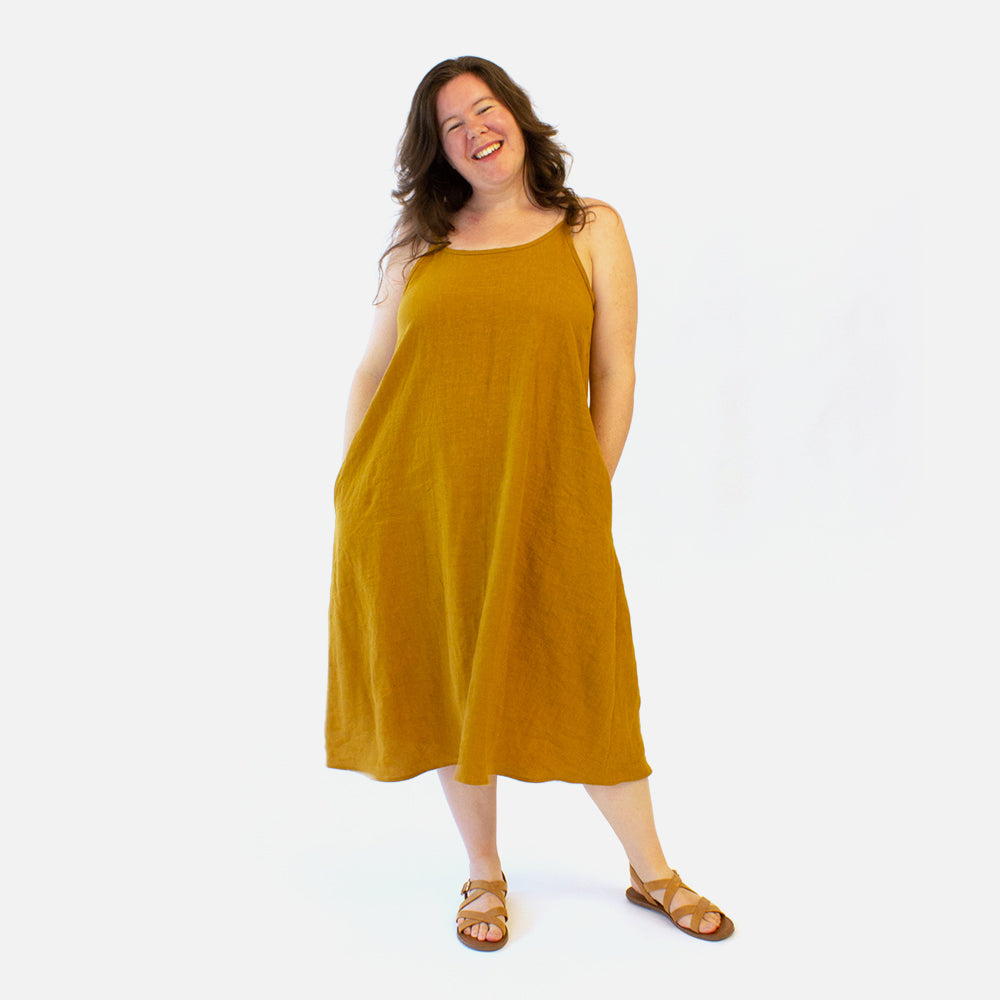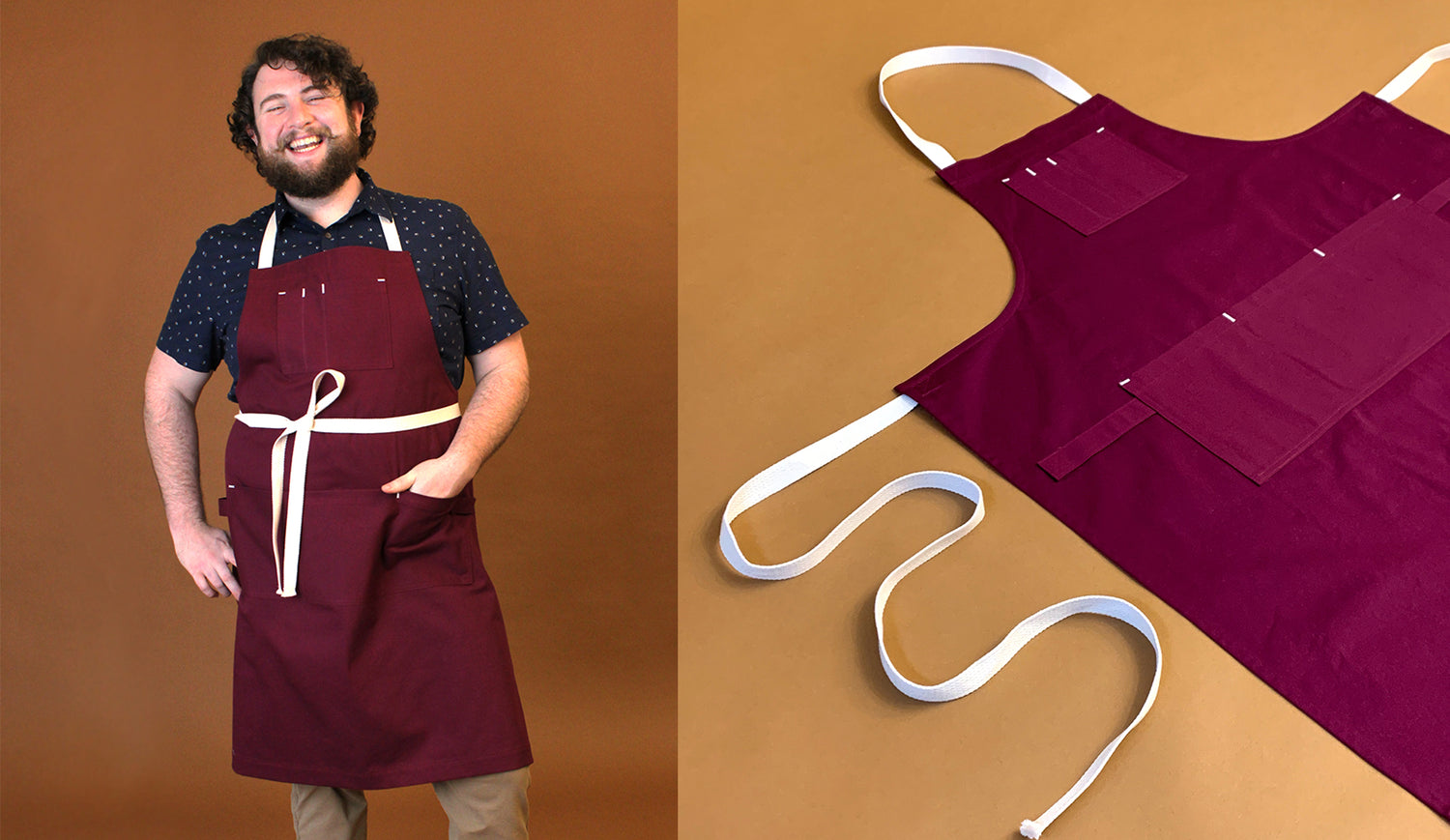I am so excited to walk you through this pattern hack for our latest design, the Gilbert Top! Since the development of the pattern, I have known this sleeveless hack was coming. I LOVE sleeveless tops!


When new patterns come out I am always thinking about all the possibilities beyond the views provided. As a sewist, I like to get mileage out of the patterns I purchase! As a designer, I keep this in mind during design and development. We tend not to provide a huge amount of views with our patterns because we want them to be straight forward and approachable. Not too many pieces, lines to cut, and options to choose from. I prefer the 'less is more' approach to design and the 'more is more' approach to the instructions and blog content!
We are always thinking and planning the hacks for our designs. I love pattern hacking because it gives people the option to take a pattern they really like and experiment further with the design! Not only do you get more options, you get experience manipulating the pattern and designing your own wardrobe! I think these skills are excellent for any sewist. I also love dreaming of hacks and making these tutorial blog posts!
So, a sleeveless Gilbert Top. What's the big deal? Can't we just leave the sleeves off? Well, that is one way to approach this but it won't give you the best fit. I took some pics of a Gilbert Top I was making before I inserted the sleeves. You will see below that the shoulders are wide, the armscye is very large, and the fit is a little on the sloppy side.


There are four things we may want to adjust to make a great sleeveless version of the Gilbert Top.
- The amount of ease in the top overall
- The length and angle of the shoulder seam
- The shape of the shirt back where it meets the yoke
- The depth of the armscye (under the arm)
What is the armscye? The Armscye (pronounced ahrm-sahy) is the armhole opening in a garment.

The Amount of Ease in the Top Overall
I sized down for my sleeveless Gilbert top. Gilbert has a boxy shape that was designed to be loose, comfortable, and reminiscent of an oversized bowling or Hawaiian shirt. Without the sleeves, I find the ease is too much and I crave a slightly tighter fit. I sized down from a 20 to an 18.
Before you size down, please check the finished garment measurements chart and ensure that the top will fit comfortably and work for your figure. If you do not want to size down (maybe you already cut the pattern out and made a bunch of fit adjustments), you can make a small adjustment to the size by sewing the side seams with a 1" (2.5 cm) seam allowance. This will make the top a bit tighter overall.

The Length and Angle of the Shoulder Seam
Once we have our pattern cut or traced out in our desired size, we can start making adjustments. We want to bring the shoulder in so the shirt has less of a line-backer vibe. We will also slightly change the angle of the shoulder seam to bring it in tighter to the body.
I brought my shoulder seam in 1.5" (3.8 cm) for my size 18. This amount won't be the same for all sizes. The amount taken in will vary from 0.75-2" (2-5 cm). You can err on the side of caution and leave more fabric for now and take some off later when you try on the top (before you add your bias facing finish).
We have to adjust the front of the top, the back, and the yoke. I like to temporarily tape my yoke and back pieces together to make this adjustment easier. Draw the 5/8" (1.6 cm) seam allowance on both pieces. Match the seam allowance lines and tape in place.

Start by marking the amount you wish to shorten. My amount is 1.5" in from the shoulder.


Scoop down to around the sleeve notches. We no longer need these notches because we aren't adding sleeves, so don't worry about preserving them. We want a decent amount removed along the upper armscye to get a nice shape on the body. The new armscye should be nice and smooth.
Next we will adjust the angle of the shoulder seam slightly. I took mine in 1/4" at the shoulder and tapered back towards the neck. Do this on the front and yoke pieces.


Separate the yoke and shirt back when you are finished.

The Shape of the Shirt Back Where it Meets the Yoke
The Gilbert top has a straight yoke. This means the yoke is purely decorative as opposed to providing shaping. We are actually going to add some shaping for our sleeveless version to prevent gaping at the back armscye.
On the shirt back, mark 1/4" (0.6 cm) down from the top along the armscye. Draw a curved line up to meet the top of the shirt back, 3-4" (8-10 cm) from the armscye. No adjustments need to be made to the yoke pattern piece.



The Depth of the Armscye (Under the Arm)
Woven tops with sleeves have a deeper (larger) armhole opening than sleeveless tops. I personally like a loose fit under my arms for comfort and breathability. I do not mind skin showing here and even the side of my bra depending on the style. If you prefer a higher fit under the arm then this adjustment is for you!
On the front and back pieces, we are going to raise the bottom of the armscye approximately 0.75-1.25" (2.3 cm). If you really like a high armscye, add more height here and you can always trim it off later, before you finish the armhole openings.
Add paper behind your pattern pieces in the lower armscye area of the front and back. Measure up the desired amount from the bottom of the armscye. Follow the angle of the shirt side seam.
Draw a new lower armscye curve that meets up with your adjusted upper armscye curve. You may need to fiddle a bit here to make the smoothest curve. Remember, you are going to get a chance to trim off extra fabric before you finish your armhole openings. Err on the side of more fabric here.



Sewing Your Sleeveless Gilbert Top
This is the easy part! Follow the instructions, ignoring anything to do with the sleeves. Once your side seams are sewn, you will be able to try it on and assess the fit of your armhole openings. If the fit feels too tight under the arm or looks too wide in the front or back, carefully trim away fabric until you are happy. Keep in mind that our bias facing finish uses a 3/8" (1 cm) seam allowance.
Caution! Trim up to 1/4" at a time, not more. A small adjustment can make a big difference here. You can take away but you can't put fabric back!
Cut bias strips of fabric (cut on a 45-degree angle) that are 1 3/8" (3.5 cm) wide and long enough to finish your armhole opening. You can piece together smaller strips if you are short on fabric. These finishing strips can also be made from contrasting fabric for a cool design detail. We have a blog post about making your own bias tape here.
Fold and press one lengthwise edge of the bias strips in 3/8” (1 cm). Repeat with the other side, folding the tape into thirds. Unfold the strips.

With right sides together, starting just behind the side seam on the back of the top, pin one of the armhole bias tape strips around one arm opening, leaving a 3/4” (2 cm) overlap. Trim off any extra bias tape.

With right sides together, sew the bias tape ends together, leaving enough slack to accurately fit the armhole. Press seam open.
Sew in the fold of the bias tape (closest to the armhole) at a 3/8” (1 cm) seam allowance.

Grade (trim) the seam allowance down to 1/4” to reduce the bulk inside the bias binding. Press the bias tape and seam allowance away from the top.

Understitch the bias tape to the seam allowance 1/8” (0.3 cm) from the seam. Understitching helps prevent your binding from peeking out on the right side of your top. It also keeps the graded seam inside from unraveling and potentially causing your binding to split open along the edge.

Using your press lines as guides, fold the bias binding over the seam allowance towards the inside of the top 3/8” (1 cm) and then again 3/8” (1 cm). Press. Stitch the bias facing in place 3/8” (1 cm) from the armhole edge. I like to sew with the wrong side of the top facing up so I can see what I am doing and get a nice, clean finish.



I hope you enjoyed this sleeveless Gilbert Top tutorial! I am excited to make more and combine this pattern hack with our upcoming Gilbert Dress hack for a lovely sleeveless shirtdress!
I chose to make my Gilbert Top in printed linen from Blackbird Fabrics. I love these little doughnuts! We used this print in our Ashton Top pattern photoshoot, and I have been wanting a top in this fabric to call my own.







